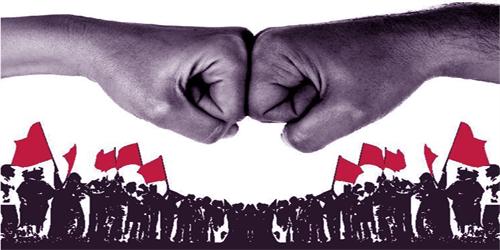The Highmarket affair (known as the “Highmarket Incident” and “Highmarket Relationship”) turned into a workers’ protest rally near Chicago’s Highmarket Square on May 4, 1886, when someone threw a bomb at police. It began as a peaceful rally in support of workers working eight hours a day, the next day police killed one and injured several workers. Despite the lack of evidence against them, eight extremist workers were convicted in the bombing. The Highmarket riots were seen as a blow to the organized labor movement in America, which was fighting for rights like an eight-hour working day. While working to disperse the crowd, an unidentified man threw a dynamite bomb at police and detonated bombs and shot dead seven police officers and at least four civilians; Several others were injured.
One person was killed and several others were injured when police intervened to protect and intimidate strikers during the McCormick Harvesting Machine Company’s union activities as part of a national campaign to protect the May 3 strike. In protest of police brutality, anarchist labor leaders called a public meeting in Highmarket Square the next day. There was evidence that one of the defendants may have made the bomb, but none of the defendants dropped it. Seven have been sentenced to death and one to 15 years in prison. Illinois Governor Richard J. Oglesby was sentenced to two years in prison; Another committed suicide in prison rather than being hanged. Louis Ling, the fifth to be condemned to death, committed suicide by biting a blasting cap in his room while awaiting his sentence. The other three defendants – Samuel Fielden, Oscar Niebe and Michael Schwab – were imprisoned, but were pardoned in 1893.
The high market issue is generally considered to be the source of the May 1 International Workers’ Day. According to William J. Adelman, Professor of Labor Studies:
- No single event has influenced the history of labor in Illinois, the United States, and even the world, more than the Chicago Haymarket Affair. It began with a rally on May 4, 1886, but the consequences are still being felt today. Although the rally is included in American history textbooks, very few present the event accurately or point out its significance.
The highmarket issue created widespread hysteria directed against immigrant and labor leaders. In the panic, August Spice and seven other anarchists were convicted of murder because they conspired or aided an unknown assailant. In 1889 a statue was erected in the Highmarket honoring the dead policeman. In 1969 and 1970 it was transferred to the Chicago Police Academy, the apex of the student radicals.











